
CANNON
“Old Ironside” had this cannon on it’s main gun deck. This model is made of wood. The barrel is 21 inches long and 4 1/2 inches in diameter.

CANNON
This cannon is the same as the one above but in a smaller scale. The barrel is 9 inches long by 2 inches in diameter and is CNC machined from steel. The trunnion caps, wheels and axles are also steel.

CANNON
The carronade was a nasty weapon. It shot anything they could find: gravel, metal scraps, even silverware. It was like a big shotgun.

GATLING GUN
The gatling gun was designed by Dr. Richard N. Gatling. His thinking was that the fire power of this gun would discourage large scale battles. The first use was at the Siege of Petersburg in 1864. The first models were .58 caliber and could deliver 350 rounds per minute. There also was a 10-barrel .30 caliber model which fired 400 rounds per minute. The US Army used the gun until the early 20th century when it was replaced by the Maxim machine gun (WWI).

GATLING GUN
Rear view. It was hard to come up with the actual dimensions of this gun. Each of the early guns was different until they had perfected the design.

MOUNTAIN HOWITZER
Front view of a mountain howitzer. It was a small gun designed to be used in the mountains or in hard to reach places. It would be broken down and the components carried on the back of mules; one mule for the barrel, one mule for the carriage, one mule for the wheels and one mule for the ammunition.

MOUNTAIN HOWITZER
Side and rear view of mountain howitzer

GARRISON GUN
The Garrison gun was a cannon designed for use in fortresses. The green carriage was made of cast iron as well as the wheels. The above model has a steel barrel which was machined on a CNC lathe and the carriage was laser cut from 1/4” steel plate.

VARIETY OF CANNONS
The large cannon in the back is made of wood and was used on a ship. The smaller one in front of it is the same gun. The gun on skids (back right) is a mortar. It shot 10” projectiles. The gun front right is called a Caronade. It was a nasty gun used mostly on ships. It shot anything they could find: nails, gravel, glass, whatever they had. The gun barrel in the front is again the same barrel as the big model. I wanted the look of a gun from a sunken ship that had been in the saltwater for 150 years. I put the barrel in a container of rock salt, poured in some water and left it there for about a year. It came out all crusted with rust. It was cleaned on a wire wheel and this is the result.

CANNON WITH BASE

COAL MINING DIORAMA
This diorama depicts the early 1900’s. It measures 15” x 11” x 15” high and is decorated with model railroad trees and shrubs. The structures were built from scratch.

SITKA CANNERY DIORAMA
This diorama is about 50 inches long. It is to 1/4 inch to the foot scale and is in the late 1940s time period. Note the stairway at the left end leading to the second floor. The door has a red light above it.

CANNERY ROW DIORAMA, ALASKA
My interpretation of a 1940’s cannery row in Alaska, accurate to the 48-star flag and seagull droppings on the roof. Note the vintage fishing boats and pile driving barge at the dock. The center building has the processing machinery inside. It measures 60” long by 22” high.

DIORAMA CLOSEUP (DIAMOND REO TRUCK)

DIORAMA CLOSE UP
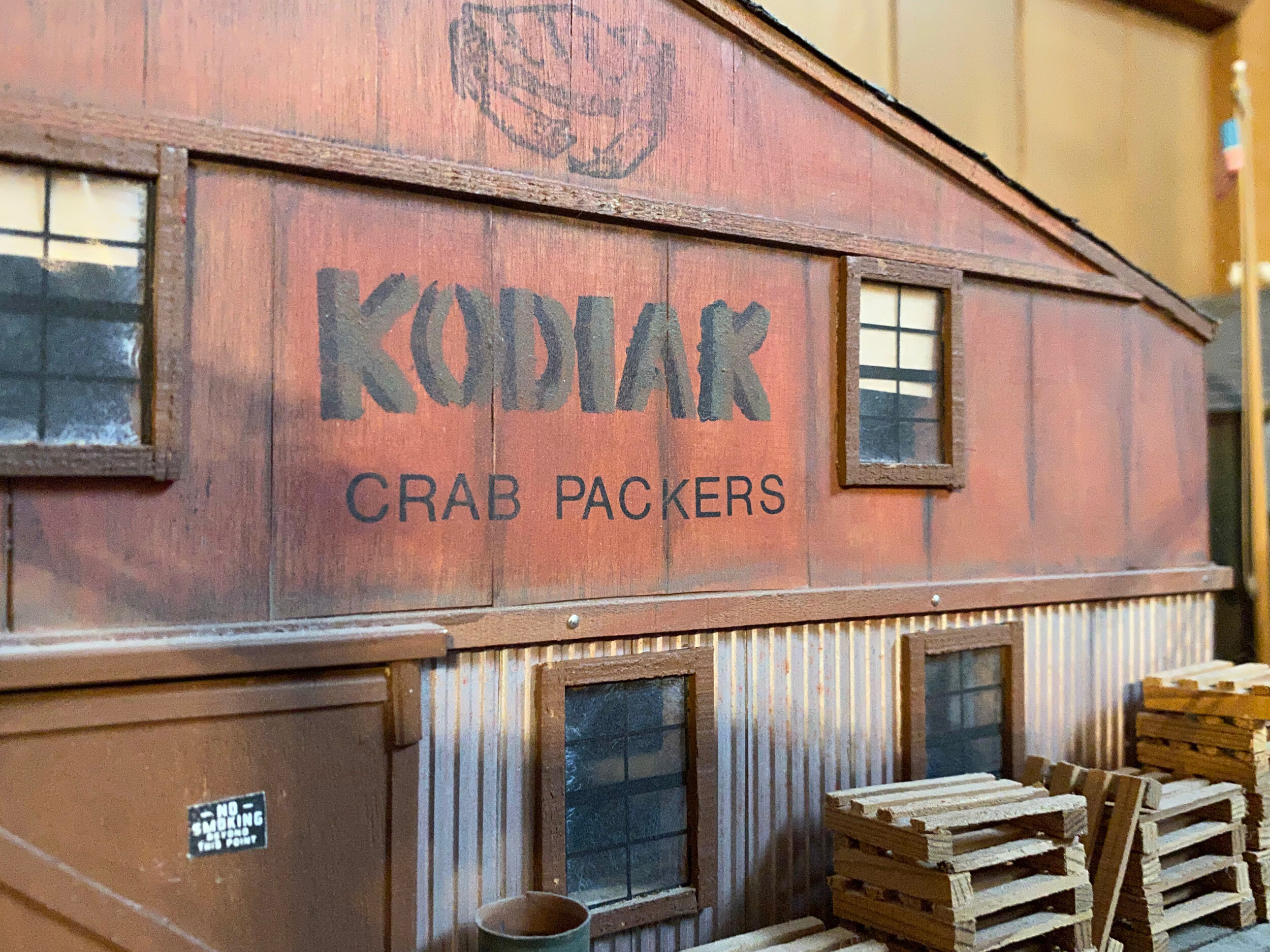
DIORAMA CLOSEUP

DIORAMA CLOSE UP

DIORAMA WITH A BUILDING UNDER CONSTRUCTION
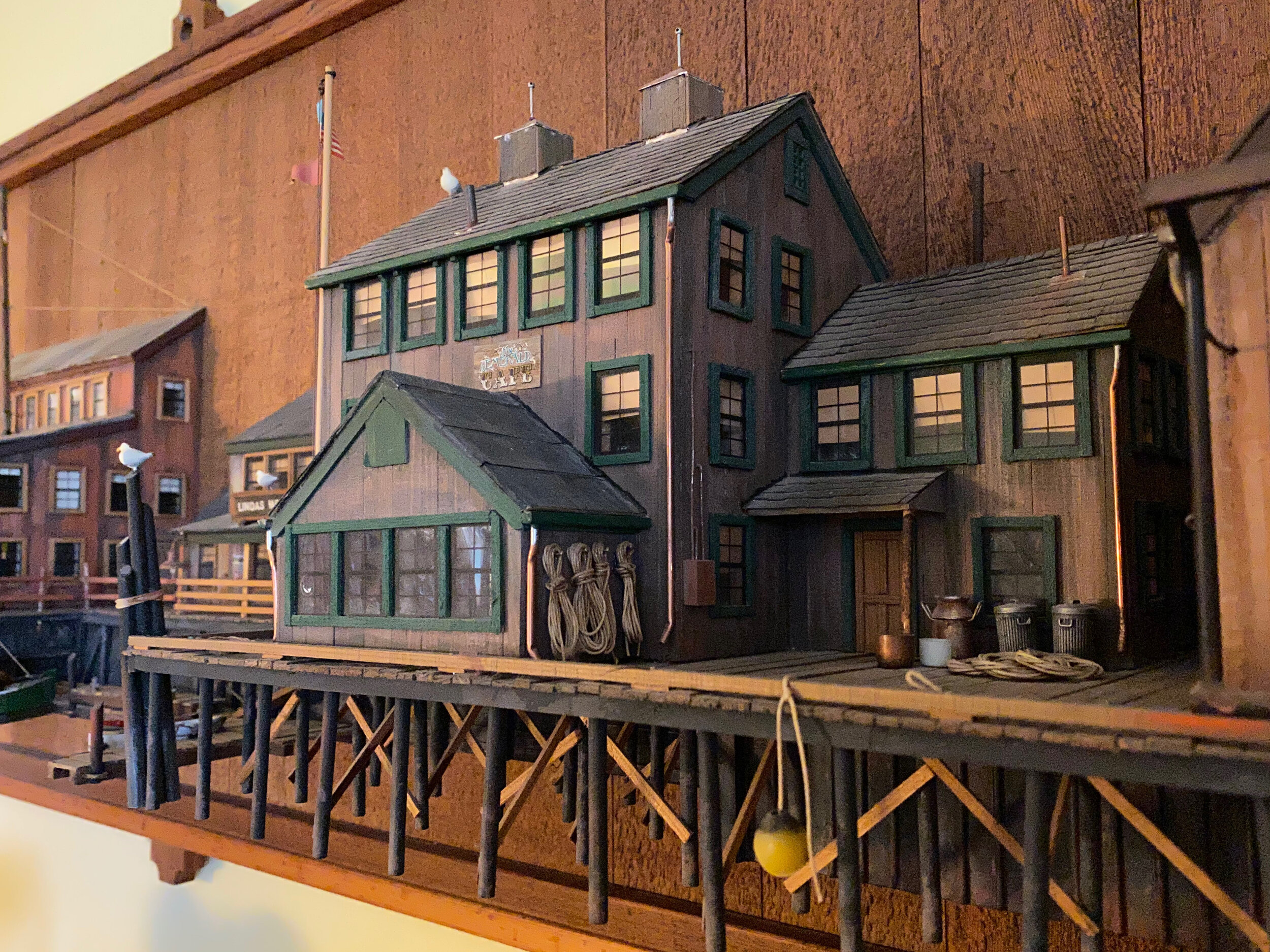
DIORAMA CLOSEUP

DIORAMA
I made a series of 36 inch long dioramas for my five grandkids all depicting Alaska canneries

DIORAMA
Kodiak Alaska cannery row with a vintage float plane and note the Diamond Rio truck

DIORAMA CLOSEUP

DIORAMA CLOSEUP

DIORAMA
This diorama was for my grandson. The black and white fishing board is named after his girlfriend. They are both standing at the stern of the boat and it is obvious she is keeping him in line.

FREE STANDING DIORAMA OF A WAREHOUSE

FREE STANDING DIORAMA OF A WAREHOUSE
The lean-to at the back of the building is a machine shop. I didn’t have a good enough camera to see through the door, but it has a full machine shop inside. Also, a lot of my dioramas have the interiors lit up with grain of wheat bulbs so the windows are illuminated when the power is turned on.


DIORAMA CLOSEUP
This signature person is on all of my dioramas. I think of him as a true Alaskan.

EUROPEAN BEAM TRAWLER
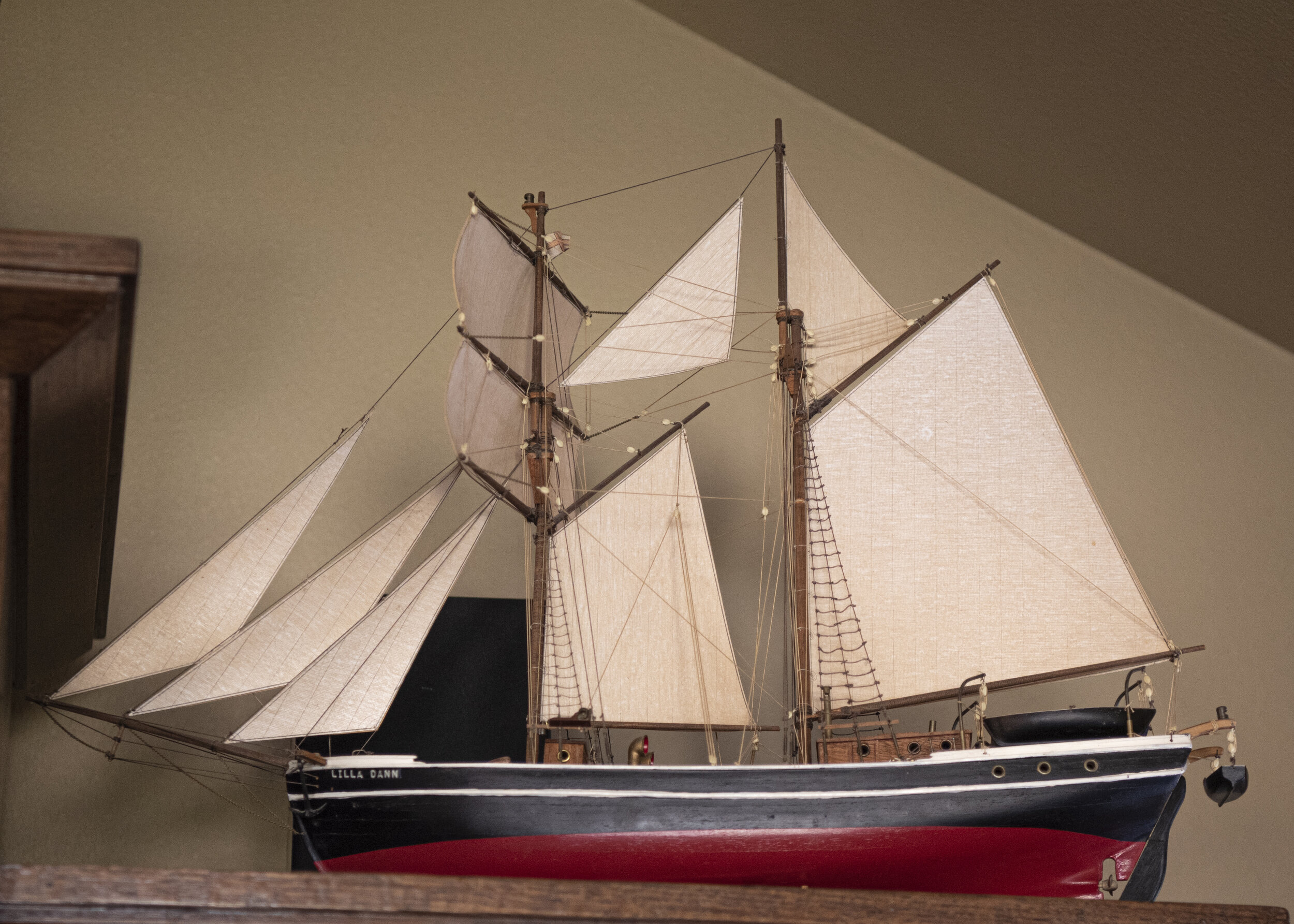
LILLA DAN
The Lilla Dan is a Blue Jacket Wooden boat model. Originally used as a training ship at J.Lauritzen’s Seamen’s School in Kogtved, Denmark, it is now used for charter trips, private parties and exhibitions. Built in 1951 at the J. Ringandersen Werft ship yard, the home port is Svendborg, Denmark. It is rigged as a toppsegel schooner. The length is 34.10m, the beam is 6.27m, the draught is 2.35m, the sail area is 280m2. The ship’s hull is made from Holz/wood. The power is 90ps and the engine is a 2zyl.alpha diesel.

LILLA DAN DECK VIEW

HARBOR TUG
This model was built from a set of blueprints for a replica tug from the mid-1890’s. It must have been a good design as the tugs of today aren’t much different. The model is 18” long x 5” wide by 9-1/2” high and would have been steam powered in the 1890’s.

CHARLES W. MORGAN MODEL
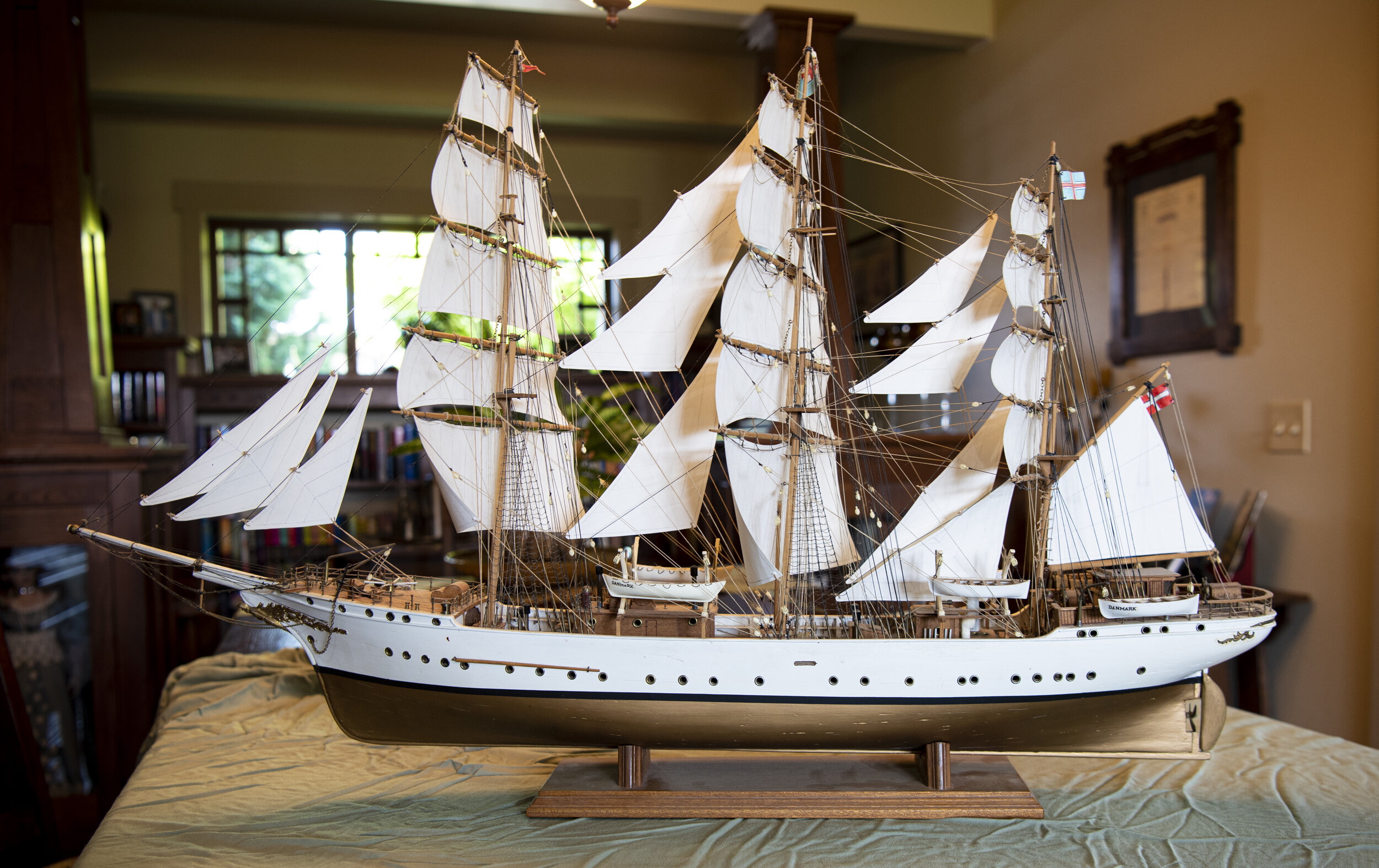
THE DANMARK
The Danmark was built from a wooden boat kit. It was built in the Nakskov, Denmark shipyard in 1933. This steel-hulled, three-masted, fully rigged ship is used today as a training ship for young people seeking careers at sea. In WWII, it was used to train US Naval cadets. The ship has 26 sails and 219 ropes, each with different names and functions. It has a main engine that is used for low wind conditions and harbor maneuvering. The ship has a permanent crew of 15 and can take on as many as 80 trainees. The Danmark is 737 gross tons; 234 feet long, 33 feet wide, has a 16 foot draft and stands 131 feet above the waterline. The model is ribbed and planked and is 38” long x 5-1/2” wide and 26” tall.

DOLPHIN SAILING SHIP (1740's)

DOLPHIN BOW DECK VIEW

DOLPHIN STERN DECK VIEW

DOLPHIN SAILING SHIP

F.E. LOVEJOY
The half-hull model of the Puget Sound Freight Line’s ship, F.E. Lovejoy, was constructed from a set of original blueprints in 1/4” scale. The ship was built at Reliable Iron Works in Olympia Washington. It was launched in July 1946. The ship was designed by Carl Nordstrom and was of all steel-welded construction. It had a 1200 hp diesel engine and a top speed of 11 knots. The ship was 174.4 feet long with a beam of 35 feet; it displaced 1500 tons when loaded and had an 800 ton cargo capacity. The Lovejoy ran between Powell River B.C. and Seattle. It carried machinery north and newsprint south. The model frame measures 52” x 24”.

EUROPEAN BEAM TRAWLER
This is a large model of an European Beam Shrimp Trawler. It measures 42 inches long by 10-1/2 inches wide and 35 inches tall. The model is all scratch built. I took the ribs and keel and stem from a smaller model and scaled them up by 2-1/2 times on a copy machine. The model is ribbed and planked, including the deck. I researched the trawler nets and built the model nets to be accurate. They consist of a beam with a bottom skid plate at each end. There is a rope attached to the loose side of the net with rollers (not floats) spaced along its length. Two chains are draped from the beam that runs along the bottom. The chains disturb the shrimp that jump up and into the net. All the components on the model are hand made.

EUROPEAN BEAM TRAWLER DECK VIEW
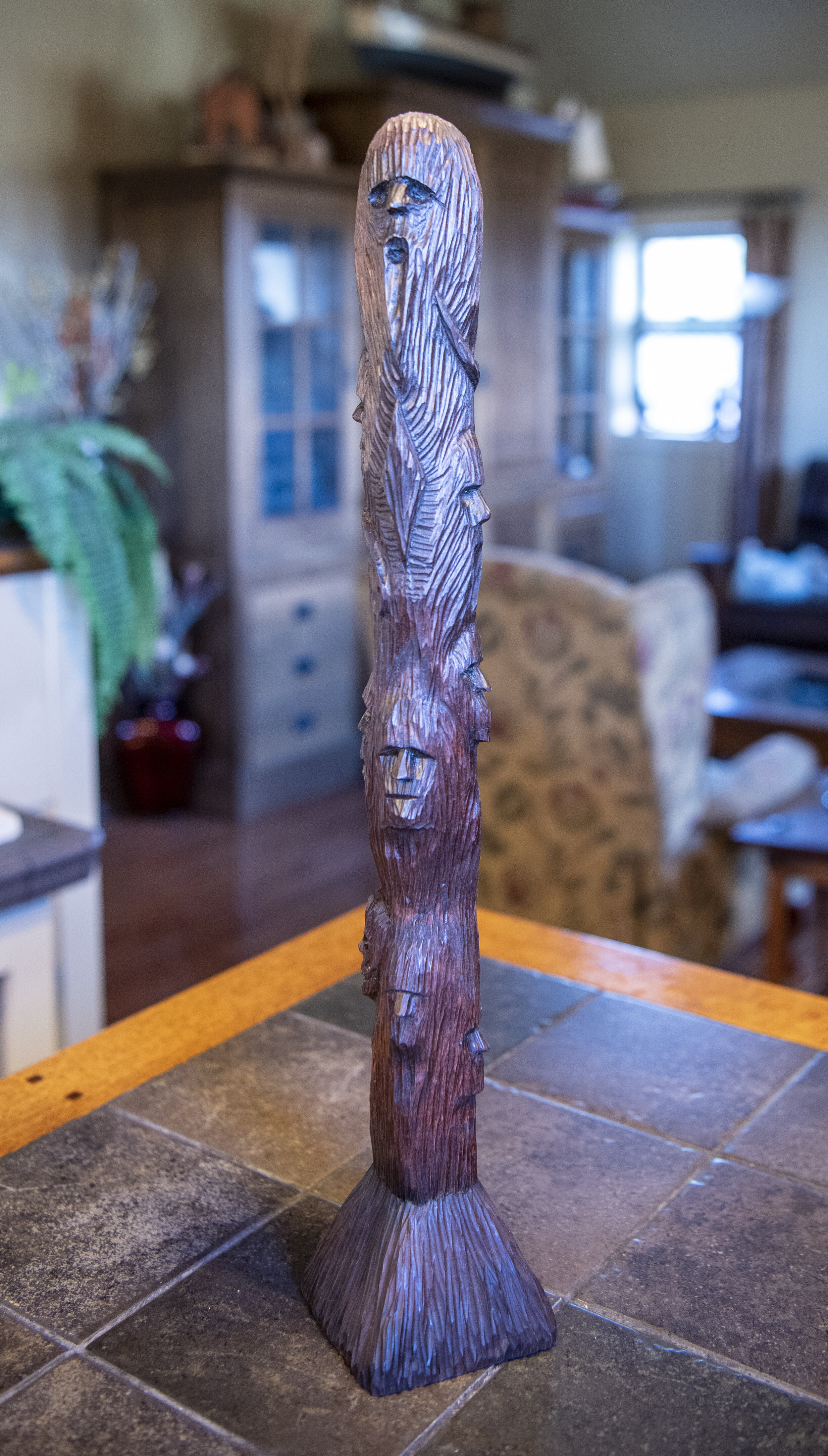
ANDERSONVILLE PRISON CAMP CARVING

ANDERSONVILLE PRISON CAMP CARVING
This carving depicts my interpretation of the Andersonville Prison Camp during the Civil War. I tried to capture the look of the suffering of the inmates.

PINE KNOT CARVING
This is a 5 inch diameter by 18 inch tall pine knot. It was found in a very old rotted away pine log laying on the forest floor near Ellensburg, WA. The carving is of stone buildings in the side of a cliff with a spiral stairway connecting them. The petroglyphs are copies of originals I found on the internet. I had a woman want to buy it to use as a concentration piece while she was meditating.
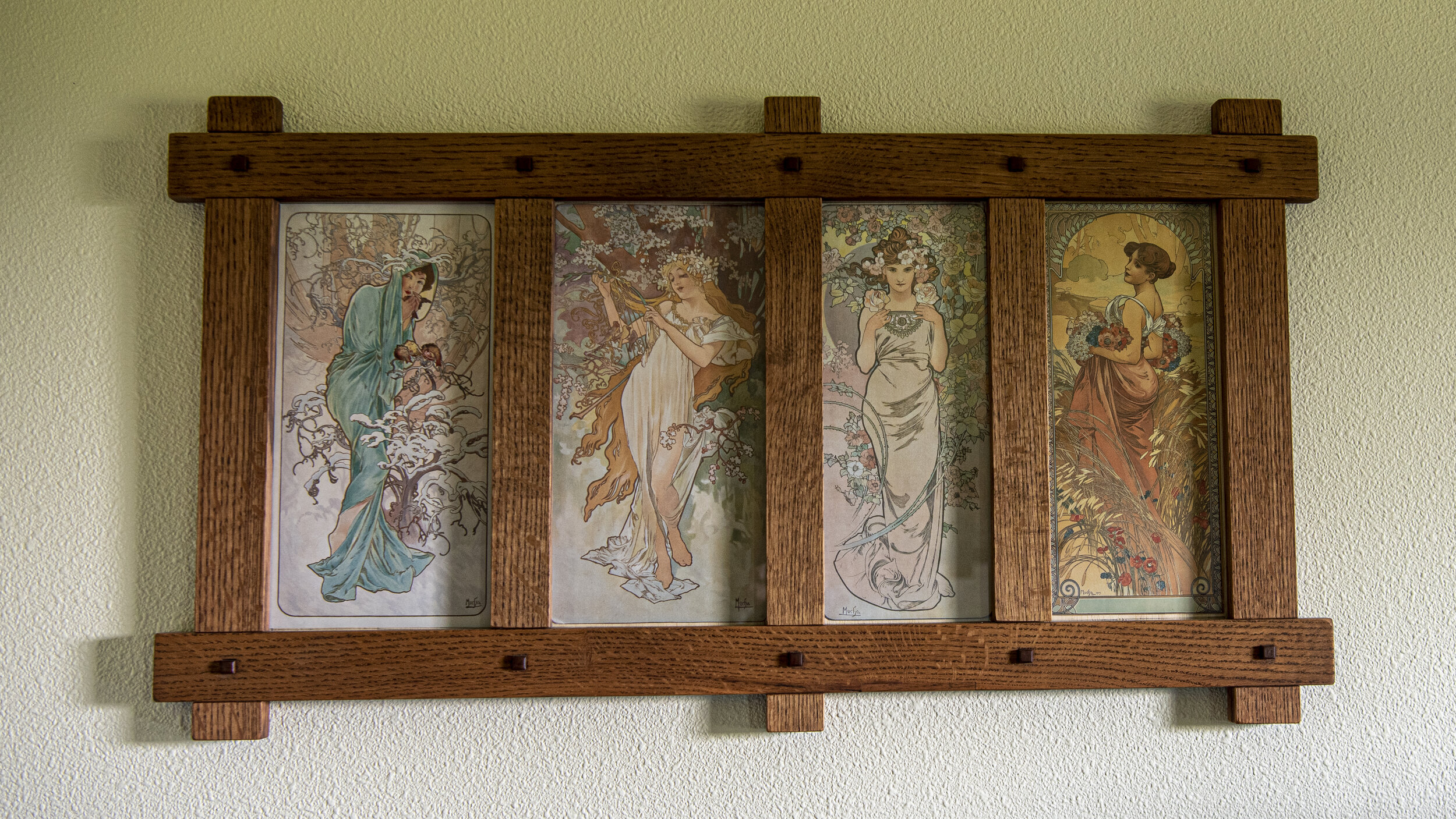
WALL HANGING ART
This piece is not finished. It still needs to be matted. The pictures are old advertising posters that depict Winter, Spring, Summer and Fall. I found them on a calendar.

WALL ART
Maxfield Parrish was an incredible artist. This is one of his works in a custom built Arts and Crafts frame. The frames are half lap joints with 1/4 inch ebony square pegs.

WALL ART
A late 1800s French poster in a craftsman frame

WALL ART
Another Maxfield Parrish painting of a woman posed in the Grand Canyon. This is a craftsman style frame that is a little more detailed than the others. Assembled with half lap joints and ebony pegs, The quarter sawn oak was finished in a dark walnut stain

WALL ART

WALL HANGING
This artwork is on five ceramic tiles and is about 35 inches tall. It is mounted in a craftsman frame with half lap joints and five-strike nails.

WALL ART
A silhouette of a raven on a limb with the full moon in the background. It is an arts and crafts frame with a tree shape cut into the sides. The scene was cut from a piece of 3/16 inch poplar. The edges were beveled then painted in the various colors. It was assembled like puzzle pieces, glued to a background then overlaid with a walnut stain. This is my interpretation of a piece that I saw in a magazine.

COAT OF ARMS
I made this coat-of-arms for my son-in-law whose ancestors were German. We found a drawing for his family crest on the internet and I modified it a bit replacing the German Eagle with an American Eagle and shield. Crossed under the Eagle, was the family weapon of choice (he chose golf clubs). It is made of pine and the colors are original.
